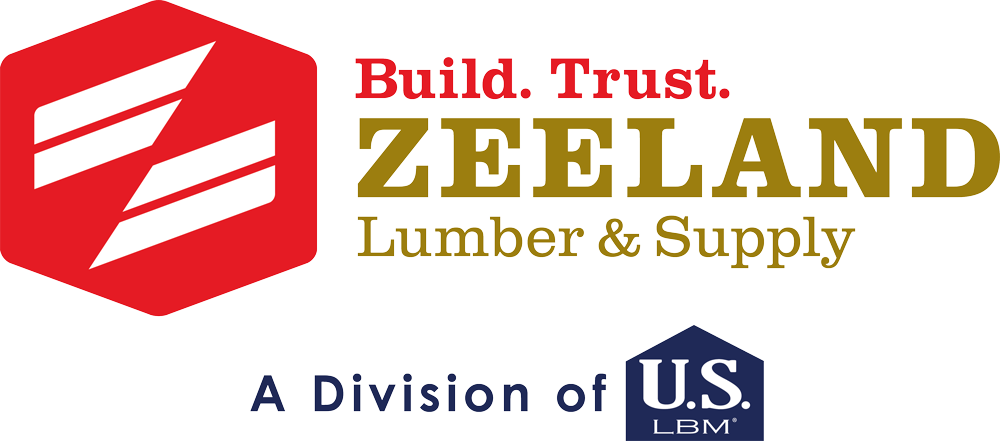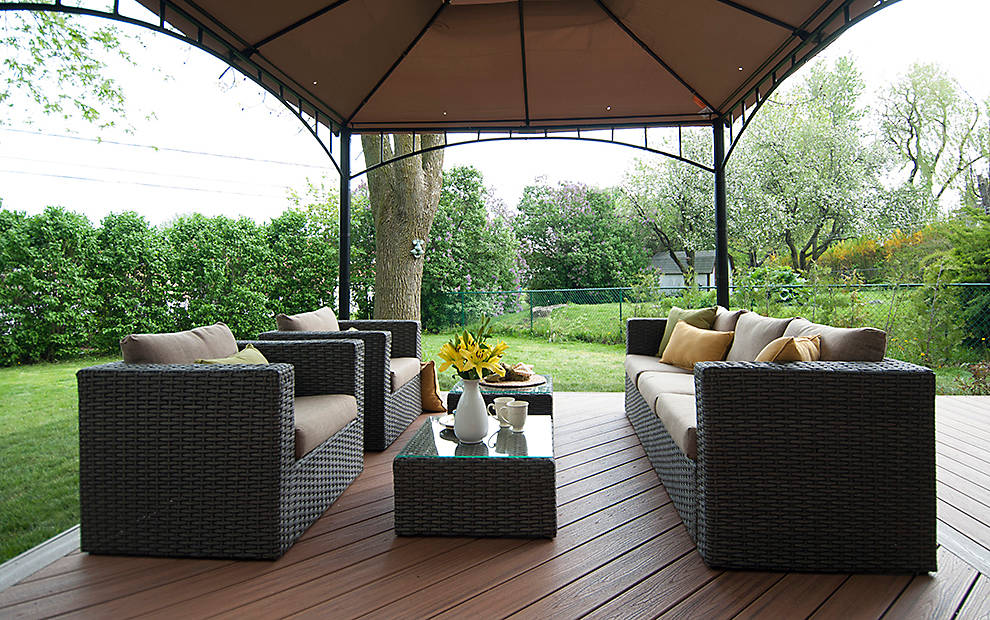Decided to build a deck? Good for you! There’s no better way to enjoy the beautiful summer weather than from the comfort of your own deck. Whether you’re planning to DIY or hire a professional, you’re probably wondering what types of deck is best for you, and about how much it’ll cost you. Like most home improvement projects, the total cost will depend on the materials you choose. That’s why we put together this cost comparison — so you can decide what type of decking material is best for you, based on upfront cost, the cost of maintenance, and the expected lifespan. Here’s our breakdown of three of the most popular decking materials:
Option 1: Low-Cost Treated Pine Decking
Pine is the cheapest material you can use to build a deck. It’s often chosen for its soft, natural look, and it is a favorite of DIYers who prefer to do the work themselves. Pine is an easy, forgiving material to work with. As decking, however, it does require a great deal of maintenance if you want it to last with minimal weathering. Let’s look at the breakdown:
Upfront Cost: On average, it’ll cost you about $2-$5 per square foot for pine decking materials, depending on the grade of pine you choose and the treatment. If you choose to have your deck professionally installed, you’ll pay per square foot for the labor, and another $150 to $300 to have the deck stained. Pine has to be stained when used as a decking material, to keep it from weathering, warping, and cracking. The stain is also what keeps a pine deck looking fresh and new. Some people do opt to install pine decks on their own.
Cost of Maintenance: Because pine is a softwood, it requires a bit more maintenance than other materials. The average pine deck needs to be resealed and stained at least every other year, to maintain a fresh look and to stave off warping and cracking as best possible.
You can expect to spend around $200 per 100 square feet every two years in maintenance supplies for your pine deck.
Lifespan: If your pine deck is well-maintained, you could get as much as 15 years out of it. Again, pine is a softwood, which means it’s more susceptible to the elements than other decking materials. This gives it a shorter lifespan. When considering whether pine is the right decking material for you, it’s good to remember that while the upfront cost is low, regular maintenance and a shorter lifespan will add to your overall investment.
Option 2: Hardwood Decking
Hardwood decking can deliver a beautiful finished product that is both natural and long-lasting. Though hardwood will cost more than pine, it’s often chosen for its luxury finish and it does require a bit less maintenance than a softwood.
Upfront Cost: The cost per square foot of your hardwood deck will vary depending on the wood type you choose. For example, cedar is a common decking option that is rot-resistant. On the lower end of the price-range, cedar will probably run you about $3 to $8 per square foot. On the other hand, if you choose something like tropical hardwood, you could pay as much or more than $14 per square foot. Like pine decking, a hardwood deck will also require stain, so you’ll want to factor that cost in along with the cost of installation.
Cost of Maintenance: Hardwood decking typically harbors less maintenance cost than pine decking, but you’ll still need to put in a bit of effort. Most hardwoods require a good yearly cleaning with soap and water, and most, like cedar, will still require regular stain and sealant if you want to preserve the deck’s original color and stop it from warping. While you can expect to spend a bit less than the maintenance of pine wood, you’ll still need to seal every few years or so.
Lifespan: When properly maintained, you can expect to get almost 20 years out of a hardwood deck, though tropical hardwoods like ipe can last a bit longer. A more common wood, like cedar, will last slightly longer than a pine deck, at a slightly higher upfront cost. While maintenance will be a bit easier, you can expect to spend a bit more overall on a hardwood deck once you combine costs for labor and installation.
Option 3: Composite Decking
Composite decking is the fastest growing category in deck material. Now manufactured with a realistic look and feel, composite decking can offer a deck just as beautiful, if not more, than a natural wood deck. Composite decking is well-loved for its durability and low maintenance, but it does sport a slightly higher upfront cost.
Upfront Cost: There are two main types of composite decking: composite core with a shell, and PVC. Both are great choices, but in most cases, composite core decking with a shell proves to be the more durable option, as it is less susceptible to warping or fading. While PVC decking offers the same resistance to mildew, rot, and moisture, it does have a tendency to peel and fade over time, and it can also be fairly slippery when wet because it is nonporous.
PVC decking will cost more up front and over its lifespan. On average, you can expect to pay between $4 to $8 per square foot for a composite deck. You will need to factor in installation costs for a composite deck — most manufacturers do not recommend DIY installation.
Cost of Maintenance: The ultimate benefit of composite decking is that it requires very little maintenance. Since composite decking is made of a combination of recycled wood and durable resin, there’s no need to stain or seal, ever. While some brands of composite decking do require a gentle wash every few years with a bit of soap and water, that’s as much as you’ll spend keeping a composite deck looking nice. Composite decking won’t fade, rot, warp, or crack, which means no maintenance, and no maintenance costs, for you!
Lifespan: The lifespan of a composite deck will vary depending on the material manufacturer. For a solid core composite material like Trex, you can expect to get 25-30 good years out of your deck. Trex even offers a 25-year warranty on their product — it’s that durable. And again, since composite decking features a unique manufacturing process, your deck will sport the same bright color and solid construction throughout its lifetime.
So, while composite decking material may cost a bit more upfront, when you take into account the maintenance pine and hardwood decks require, composite decking is likely to cost you less over time than any other option.
That said, composite decking isn’t right for everyone. If you’re planning to build your deck yourself, or if you like the natural feel of real wood, you might choose a pine or hardwood decking material. In the end, it’s your deck, and you should choose the material that best suits your taste and your budget. We hope this cost comparison helped to give you an idea of your options!
For any deck you’re planning, head to Zeeland Lumber & Supply for the materials you need, and expert advice when making those tough choices. We’re here to be a resource for builders, contractors, and homeowners alike, and we’d love to help you find the perfect decking material for your home. From quality pre-treated lumber to name brand composite decking material like Trex, we’ve got everything you need. Give us a call at 888-772-2119, contact us online, or stop into one of our Midwest locations for more deck building resources!


